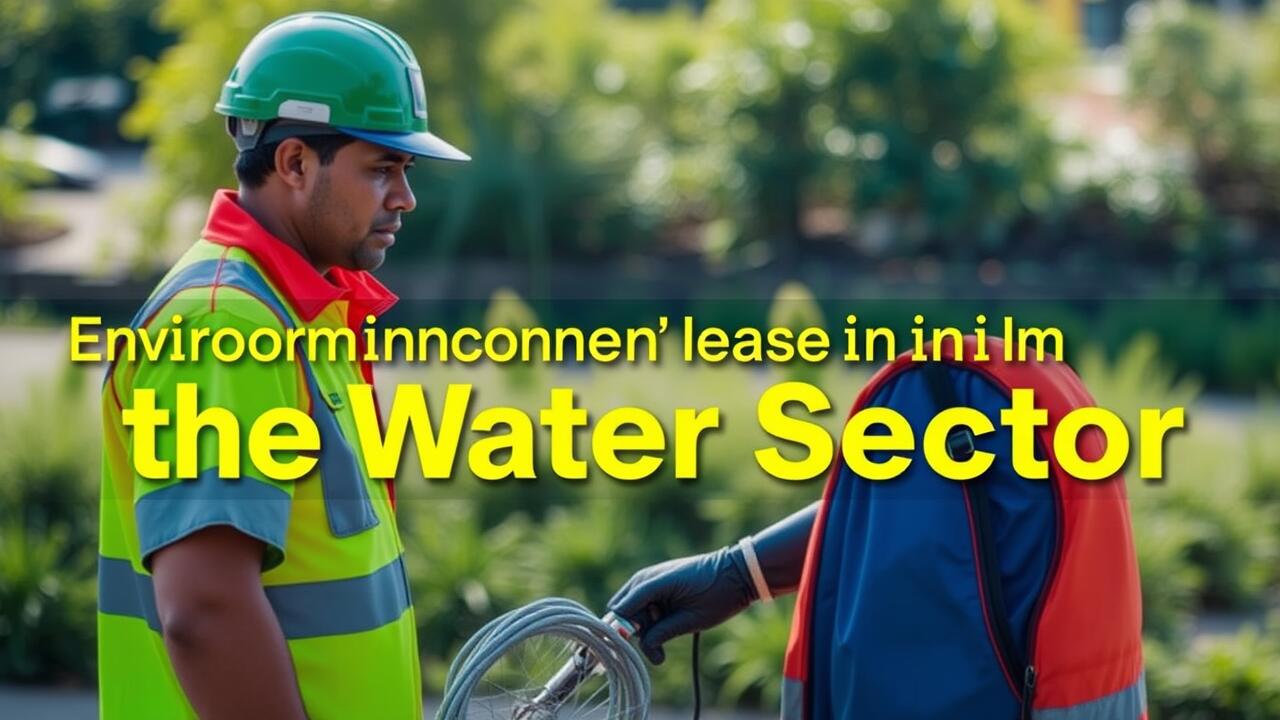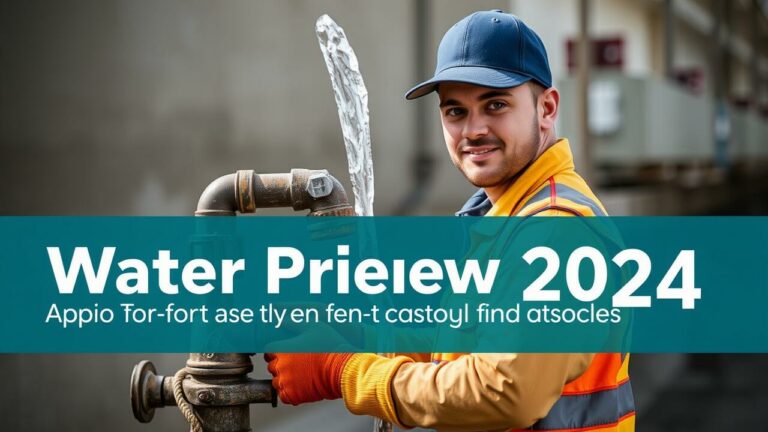Environmental Commitments in the Water Sector Progress and Challenges
In the ever-evolving landscape of water management, collaboration among a kaleidoscope of stakeholders has surged to the forefront as an absolute necessity in tackling persistent environmental hurdles. Picture this: water utilities, government agencies, non-profits, and private enterprises—each distinct yet interconnected—banding together to forge innovative programs and sustainable practices that shimmer with promise. These alliances do more than just enhance resource management; they weave a rich tapestry where diverse perspectives and vast expertise converge within decision-making realms. It’s this comprehensive approach that nurtures resilience in our water systems by harnessing the collective might of every player involved.
But constructing these dynamic collaborative frameworks? That’s no walk in the park! It demands rock-solid communication and unified goals. Stakeholders are called upon to champion transparency—a critical ingredient for building trust and sparking vibrant exchanges of knowledge alongside best practices. Enter joint initiatives like watershed management projects—these serve not merely as platforms but as crucibles for creativity where stakeholders co-design solutions tailored to local needs while remaining firmly anchored in broader environmental guidelines. Such harmonious endeavors don’t just sprout accountability; they cultivate stewardship that promises enduring sustainability throughout the water sector’s intricate web.
Importance of Partnerships in Driving Change
In the ever-evolving landscape of water management, collaborative endeavors have surfaced as a pivotal force for driving transformative change. Picture this: an eclectic mix of players—government agencies, non-profit organizations, and private enterprises—all bringing their unique skill sets and resources to the table. It’s like a symphony of expertise where innovation thrives through the dynamic exchange of knowledge and best practices. When diverse perspectives converge, they create richer solutions that tackle the urgent challenges surrounding water sustainability with depth and nuance.
But wait, there’s more! These partnerships aren’t just about high-level strategies; they’re also crucial for amplifying outreach and education efforts in meaningful ways. By engaging directly with communities, initiatives can be fine-tuned to echo local values and needs—creating programs that resonate deeply. Involving citizens in decision-making isn’t merely a checkbox; it cultivates a genuine sense of ownership over water conservation efforts. This collective synergy empowers all stakeholders to confront both immediate crises and long-range goals within the intricate tapestry of the water sector—a true testament to what collaboration can achieve!
Impact of Climate Change on Water Resources
The impact of climate change on our water resources is becoming alarmingly clear, as erratic weather patterns and soaring temperatures twist the dynamics of precipitation and evaporation into a chaotic dance. In some regions, droughts are not just occasional visitors; they’re showing up more often than ever before. Meanwhile, in other locales, torrential rains lash down, triggering floods that seem to come out of nowhere. This tumultuous shift disrupts the delicate balance of the natural hydrological cycle—resulting in diminished water availability in certain areas while simultaneously heightening risks of contamination from runoff and overflow.
To navigate these new realities demands a thorough examination of our water systems’ weaknesses—a deep dive into their vulnerabilities. Water management practices can’t remain stagnant; they must evolve to weave climate forecasts and impact projections into their very fabric. This means bolstering infrastructure resilience but also embracing innovative conservation strategies that rise to meet this challenge head-on. Sustainable practices will be crucial for maintaining equitable access to clean water amid the swirling uncertainties brought by climate change’s relentless march forward.
Adaptation Strategies for Resilient Water Systems
The water sector is under mounting pressure, a relentless tide driven by climate change, demanding not merely reaction but proactive adaptation strategies to build resilience. Enter integrated water resource management—a dynamic approach that sharpens our capacity to tackle the unpredictable ebbs and flows of water availability across time and space. This strategy champions the emergence of multi-functional ecosystems, blending nature’s inherent processes with traditional supply systems in an intricate dance. By embracing sustainable practices as a priority, stakeholders can arm themselves against the whims of climate events—crafting a sturdy shield against both shortages and floods.
Amidst this landscape, technological innovations emerge as pivotal players in fortifying the resilience of our water systems. The embrace of cutting-edge monitoring and forecasting tools transforms decision-making into an art form—one that enhances water management with precision. Pouring resources into infrastructure upgrades like green stormwater solutions does more than just stave off flood risks; it elevates water quality itself. Moreover, weaving together collaborations among public entities, private enterprises, and community groups becomes essential—it cultivates an environment ripe for sharing best practices and knowledge while harnessing collective resources for truly effective climate adaptation strategies.
| Adaptation Strategy | Description | Benefits |
|---|---|---|
| Integrated Water Resource Management (IWRM) | A coordinated approach to managing water resources that considers the entire water cycle and incorporates stakeholders. | Enhances resilience to water scarcity and floods, encourages sustainable use of resources. |
| Green Stormwater Solutions | Implementing natural infrastructure, such as green roofs and permeable pavements, to manage stormwater. | Reduces flooding, improves water quality, and promotes biodiversity. |
| Technological Innovations | Utilizing advanced monitoring and forecasting tools to improve decision-making processes in water management. | Increases precision in management, optimizes resource allocation, and enhances situational awareness. |
| Collaboration Among Stakeholders | Building partnerships among public agencies, private companies, and community organizations to share knowledge and resources. | Strengthens systems through shared best practices, fosters innovation, and maximizes resource utilization. |
Community Engagement in Water Conservation
Communities, when actively engaged, become the heartbeat of effective water conservation strategies—a dynamic rhythm that cannot be ignored. Picture grassroots initiatives springing to life, igniting a spark within citizens about sustainable practices; this empowerment transforms individuals into stewards of their local water treasures. But wait! The magic doesn’t stop there—collaborations with schools, non-profits, and local governments weave an intricate tapestry of support that magnifies the call for conservation.
Now consider programs designed to pull residents into hands-on activities like watershed clean-ups or meticulous water audits. These aren’t just tasks—they’re eye-openers that elevate public consciousness around pressing water issues to new heights!
Yet how do we cultivate a culture steeped in conservation? It thrives on continuous dialogue—an ever-turning wheel of communication and feedback among stakeholders. Workshops and community forums become vibrant arenas where ideas clash and coalesce, birthing tailored solutions as diverse as the communities themselves. And let’s not forget social media—the modern megaphone—for it can amplify conversations about water conservation like never before.
In this collaborative dance of stewardship, communities don’t merely participate; they lead boldly into a future where sustainable practices flourish, nurturing the very essence of their local water systems for generations yet to come!
Building Awareness and Encouraging Action
Effective communication is the beating heart of water conservation initiatives, pulsating with urgency and importance. Picture this: a community brought together by vibrant educational programs that illuminate the pressing challenges our local water sources face. Imagine workshops buzzing with anticipation, informational seminars teeming with insights, and social media campaigns exploding like fireworks to spread knowledge about sustainable practices far and wide. These avenues can ignite a spark in individuals, empowering them to make choices that ripple positively through our environment.
But let’s take it a step further—engaging folks in hands-on activities transforms understanding into action! Organizing clean-up events at local waterways not only cultivates appreciation but also reveals the stark impact of pollution right before their eyes. And when schools join forces with local organizations? That’s where the message of sustainability amplifies, reverberating throughout the community like an echoing call to arms. Once people grasp their role in safeguarding our precious water resources, they’re much more likely to embrace long-term conservation habits that stand the test of time.
Future Trends in Water Sector Environmental Commitments
In the coming decade, the water sector is poised for a transformative leap toward environmental commitments that could redefine its very essence. A burgeoning awareness of sustainable water management—once an afterthought—is now reshaping policies and practices with urgency and vigor. Enter technology: innovations are set to take center stage, ushering in smart water systems equipped with real-time data analytics that promise not only heightened efficiency but also a significant reduction in waste.
Expect to see more organizations embracing circular economy principles, their focus shifting decisively towards resource recovery and reusability—a paradigm shift that’s as daunting as it is essential. But wait, there’s more! Collaborative frameworks involving government bodies, NGOs, and private enterprises are on track to proliferate like never before. Stakeholders will rally together to forge integrated water resource management strategies aligned with sweeping climate objectives.
And let’s not overlook enhanced regulatory structures paired with enticing financial incentives—they’re likely to spark an uptick in investments directed at green infrastructure. As climate change continues its relentless assault on our precious water resources, the quest for environmental sustainability will undoubtedly remain front and center on both public and private agendas—an unwavering commitment amid swirling challenges that demand our immediate attention.
Predictions for the Next Decade
The coming decade is poised on the brink of a transformative wave, one that will likely usher in an era of integrated water resource management unlike anything we’ve seen before. Picture this: stakeholders within the water sector—governments, industries, communities—all converging in a grand tapestry woven with collaboration and shared purpose. It’s not just about adapting; it’s about crafting resilience against the multifaceted challenges our precious water sources face.
Technological breakthroughs loom large on the horizon, set to revolutionize how we approach decision-making. Imagine data-driven insights guiding us toward optimized water usage while simultaneously elevating conservation efforts to new heights! Smart water management systems could emerge as game-changers—streamlining operations and curtailing waste like never before, opening doors wide for substantial ecological gains.
And let’s not overlook the swell of public consciousness around climate change—a tidal wave that promises to propel community engagement in water conservation initiatives into overdrive. Educational programs are expected to proliferate, igniting empowerment among individuals eager to take concrete steps towards safeguarding our dwindling resources. Local partnerships might blossom into vibrant grassroots movements championing sustainable practices at every turn.
These trends could weave together not only enhanced water management but also foster an invigorated sense of responsibility rippling through communities. A collective commitment may arise—a steadfast resolve to protect essential water supplies for generations yet unborn—an endeavor both noble and urgent as we navigate these shifting tides together.
- Increased collaboration among governments, industries, and communities is essential for effective water resource management.
- Technological innovations, including smart water management systems, will drive efficiency and conservation efforts.
- Data analytics will become crucial in optimizing water usage and minimizing waste.
- Community engagement initiatives will surge, empowering individuals to actively participate in water conservation.
- Educational programs will play a significant role in raising awareness about sustainable water practices.
- Grassroots movements are likely to emerge, advocating for local sustainable water management solutions.
- A shared sense of responsibility for water resources could develop, fostering collective action for future generations.
Policy Recommendations for Enhanced Sustainability
Navigating the labyrinth of sustainability in the water sector demands a tapestry of effective policy frameworks, each thread meticulously woven to address both ecological and human imperatives. Picture this: integrated water resource management (IWRM) isn’t just a buzzword; it’s a vibrant symphony where stakeholders harmonize their efforts, exchanging best practices like precious currency and orchestrating an efficient allocation of resources that flows seamlessly across borders.
But wait, there’s more! Financial incentives for eco-friendly technologies act as catalysts—sparking innovation and propelling us toward sustainable practices that ripple through diverse sectors. Governments must don their regulatory armor, wielding robust laws that tackle pollution’s insidious grip and curb the relentless over-extraction of our vital water sources. Imagine fortified enforcement mechanisms standing guard, ensuring compliance from businesses and municipalities alike with unwavering vigilance.
And let’s not overlook the magic of community engagement! Involving local voices in policy-making cultivates a profound sense of ownership—it transforms abstract initiatives into grounded realities. When citizens are armed with knowledge through education and outreach programs, they become empowered advocates for environmentally responsible policies right where they live. Thus unfolds an intricate dance towards sustainability—a journey marked by collaboration, innovation, accountability, and above all, hope for our shared future.
Strategies to Overcome Existing Barriers
Tackling the complex barriers to achieving heightened sustainability in the water sector demands a rich tapestry of strategies. Policymakers, for instance, must elevate their game by crafting robust regulations that not only encourage but also reward innovative water conservation practices. Picture this: financial mechanisms like grants and low-interest loans springing into action, boosting the uptake of cutting-edge technologies while simultaneously lowering entry barriers.
But it doesn’t stop there! Imagine an intricate web of collaboration woven among government entities, private companies, and non-profits—each sharing insights and pooling resources—effectively dismantling those pesky silos that so often impede progress.
Moreover, let’s not underestimate the power of education! Initiatives designed to enlighten stakeholders about sustainable water management are absolutely vital. Think vibrant community workshops and eye-opening information campaigns stirring up a collective sense of stewardship over our precious water resources. And what about our future? Integrating lessons on water sustainability right into educational curricula ensures that young minds grasp these critical issues from an early age.
These multifaceted approaches reveal a steadfast commitment to nurturing collaborative environments while empowering both individuals and organizations alike to embark on tangible actions toward conserving our vital water supplies.
Conclusion
The terrain of environmental commitments in the water sector is a tapestry woven with both remarkable strides and daunting hurdles. A mosaic of collaborative endeavors among stakeholders has sparked a flurry of initiatives, all aimed at fine-tuning water resource management to its fullest potential. Yet, despite this rising tide of awareness surrounding sustainable practices, yawning gaps linger in the realms of implementation and enforcement. As climate change relentlessly tightens its grip on our planet—intensifying water scarcity and transforming ecological landscapes—the urgency for adaptive strategies surges, demanding that resilient water systems become not just aspirational but essential.
Looking ahead, we can anticipate a dynamic shift towards an era brimming with innovation and technology-driven solutions within the aquatic realm. Policymakers will find it imperative to forge partnerships that traverse the boundaries between government agencies, private enterprises, and local communities; only then can we hope to tackle the formidable challenges before us effectively. By placing a spotlight on community engagement, we cultivate a vibrant culture of stewardship—one where individuals feel empowered to take action. Meanwhile, bespoke policy recommendations will serve as critical scaffolding needed to dismantle existing barriers obstructing our path toward sustainability.







